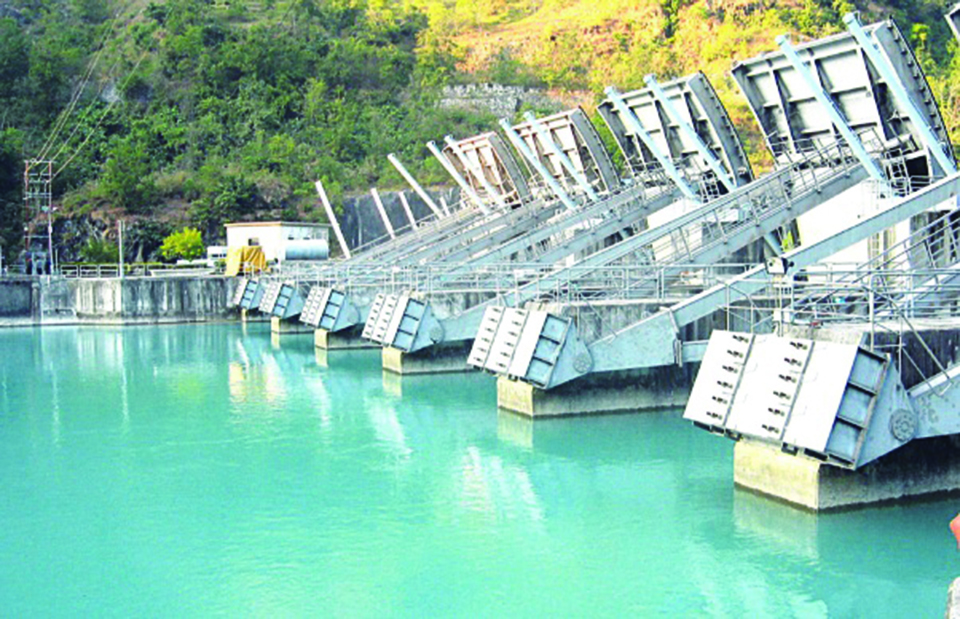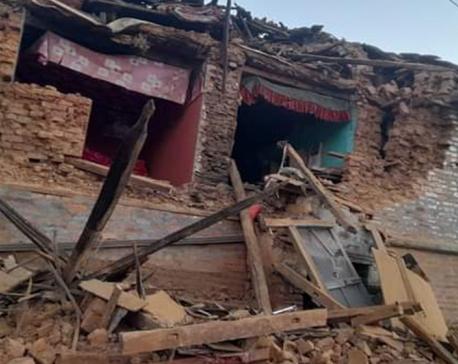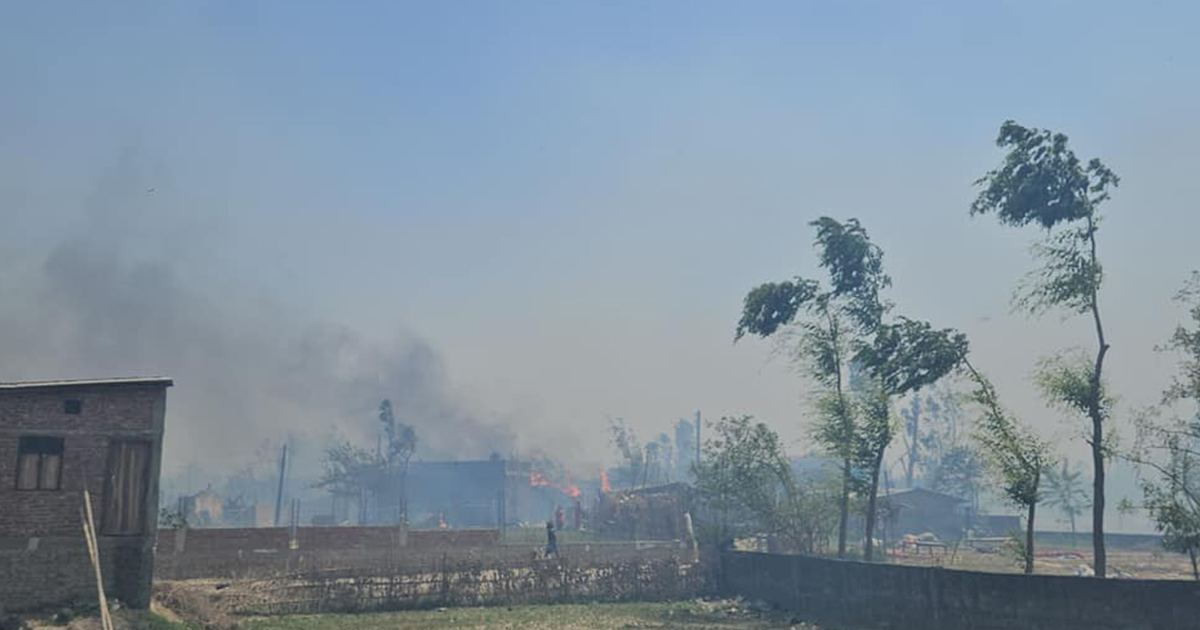
OR

Nepal must shake off its curse of hydro and move to a 21st century energy strategy that is in sync with evolving trends, technological change and regional context
In 1907, Nepal and China both began constructing their first hydro power plants—Nepal in Pharping and China in Yunnan province. When King Prithvi Bir Bikram Shah Dev inaugurated the Pharping plant by switching on the lights in a public ceremony in Tudikhel in May 1911, the Chinese were still working toward their first 250 KW Yunnan plant.
In the century that has followed, China has gone on to build 315,000 MW of hydro power plants including the single largest hydro power plant in the world, the 22,500 MW Three Gorges plant. Nepal has built less than 1,000 MW.
The conclusion from this comparison isn’t that China has outpaced Nepal in hydro power development. Rather, the conclusion should be that the window of opportunity for large hydro power plant in Nepal has now closed.
The future of large hydro in Nepal is dead.
The world has changed in the century since Nepal became only the second Asian country to install a hydro power plant. We have missed a century of opportunities. Instead of now remaining stuck in our 20th century vision reminiscing about missed chances, Nepal must quickly move to an energy strategy for the 21st century.
In 2017, China installed 53,000 MW of solar, higher than the total solar capacity added in the rest of the world. It was also the first time that solar capacity additions in China were higher than of any other types, such as fossil or hydro.
Nepal’s energy narrative must be in sync with evolving trends, technological changes and regional energy context. We must change our narrative from a dominance of hydro towards a network of distributed renewable energy systems with diffuse ownership that is appropriately plugged into the Indian grid and directly benefits all Nepalis.
Curse of hydro
In 1911, Pharping hydro power plant had one purpose: To power the homes and palaces of Ranas and Shahs. Since then, Nepal’s hydro power plants have provided electricity to approximately 70 percent of its population. Despite the growing supply, the benefits of hydro power development have failed to reach the people of Nepal.
Over the last century, Nepal has failed to develop hydro power not because of technical, financial or policy constraints. Those are the symptoms. The underlying cause is the political economy of hydro—the fact that hydro has profited only a small handful of people. The failure to add capacity is an expression of the stalemate resulting from the struggles among the few that benefit from hydro power development.
The government’s recent white paper on energy proposes to make ordinary Nepalis shareholders of new hydro power plants. The policy seeks to correct the long-standing concern that hydro plants have disproportionately benefited only a few. As well-intentioned as it may be, the idea of citizen ownership is not practical for hydro power development. What does citizen ownership even mean? Either government takes all our money and invests it on our behalf in hydro plants or that private developers would raise public money for financing the plants?
Such goals are wishful thinking that simply overlook the underlying problems. If the government or the private sector were a competent promoter of large hydro plants that could be trusted with public finance, we wouldn’t be at 1,000 MW today.
The other myth is that hydro plants lead to development of the region where they are located. In most instances, public expenditures in areas where hydro-plants are to be built have merely ended up benefiting hydro plant developers rather than the broader community. Affected communities receive little additional to what they would have had anyway.
Many hydro and associated transmission projects in Nepal are currently mired in local opposition. Developers and investors widely regard such local activism as political opportunism that is seeking to extract short term ransom. There is certainly plenty of political opportunism but there is also fertile ground for such activism. Local communities are often in opposition of even seemingly good projects, partly because they have no reason to be invested in the project’s success.
The last century of hydro power in Nepal has been a story of exclusion. There is nothing new—including the Maoist energy minister’s rhetoric—to suggest that the benefits will be more broadly shared.
The biggest tragedy of our unitary focus on hydro has been the neglect of agriculture and water management. We have missed an opportunity to better tame our rivers, create navigation routes, enhance agriculture and reduce our vulnerability to water disasters.
The end results are striking. Parched lands and poor agricultural productivity that have made us net importers of food and driven our young men and women to seek economic opportunities abroad. Every year we lose lives to water disasters.
If aliens were to arrive in Nepal and look back at the century that was, they may regard hydro not as the great unbounded potential, but rather as the curse of Nepal.
Alternate vision
There is an alternate vision—a vision of a new Nepali electricity grid that is predominantly reliant on distributed renewable energy, like solar, wind and low impact hydro.
Such systems are already commercially and technically feasible. Take Germany’s example. At 6 AM on January 1, 2018, generation from its wind plants alone met 100 percent of its load. Other plants (coal, gas, nuclear) were forced to turn down, resulting in negative prices (you got paid to keep the lights on!) and surplus energy was exported to other countries. It was 6 AM and the 43,000 MW of solar distributed across approximately 1.6 systems were not yet producing. Germany is on course to ensure that all its generation comes from renewable energy by 2050.
A system with distributed renewable energy will enable all Nepalis to be an owner of generation. Unlikely hydro, we won’t have to wait for the generosity of hydro developers or government for the benefits to trickle down to make us feel invested. An electricity grid that is driven by distributed renewable energy offers every Nepali an opportunity to own a generation asset—every roof-top, every bit of open space could be converted into a generation asset.
Like Germany, a system with high levels of distributed renewable energy can only work if it is well connected with a larger grid. There is no doubt that we must create better cross-border electricity interconnection facilities with India. Unlike large hydro which requires dedicated lines, distributed renewable energy could be interconnected through a more diffuse cross-border network. Such a diffuse network has a higher likelihood of creating stronger cross-border connection with India’s power system than large dedicated transmission corridors. A diffuse network will enable us to integrate stronger operational links and procedures. As part of the harmonized network, Nepal would have access to a wider range of opportunities for power sales and trading.
If negotiated correctly, there is a better and bigger market for exports of distributed renewable energy than hydro power exports to India.
Aliens are unlikely to land in Nepal to show us the way. It is up to us, Nepali, whether we remain stuck with the failures of the last century or move forward to new possibilities.
bishal_thapa@hotmail.com
You May Like This

Evidence-Based Policy Making in Nepal: Challenges and the Way Forward
“Life and health can never be exchanged for other benefits within the society.” With this vision, the Swedish Parliament in... Read More...

Nepal's Seismic Struggle and Ongoing Recovery Dynamics
Nepal's seismic vulnerability is highlighted by its history of frequent and devastating earthquakes. Over the past 52 years, from 1970... Read More...

Equality under the Law: Examining Legal Principles across Different Scales
The suspension of Nepali Congress (NC) MP Tek Prasad Gurung, who was found guilty on corruption charges, has confirmed that... Read More...





Just In
- 104 houses gutted in fire in Matihani (With Photos)
- By-elections: Silence period starts from today, campaigning prohibited
- A Room of One's Own- Creative Writing Workshop for Queer Youth
- Tattva Farms rejuvenates Nepali kitchens with flavored jaggery
- Evidence-Based Policy Making in Nepal: Challenges and the Way Forward
- Insurers stop settling insurance claims after they fail to get subsidies from government
- Nepal-Qatar Relations: Prioritize promoting interests of Nepali migrant workers
- Health ministry to conduct ‘search and vaccinate’ campaign on May 13














Leave A Comment